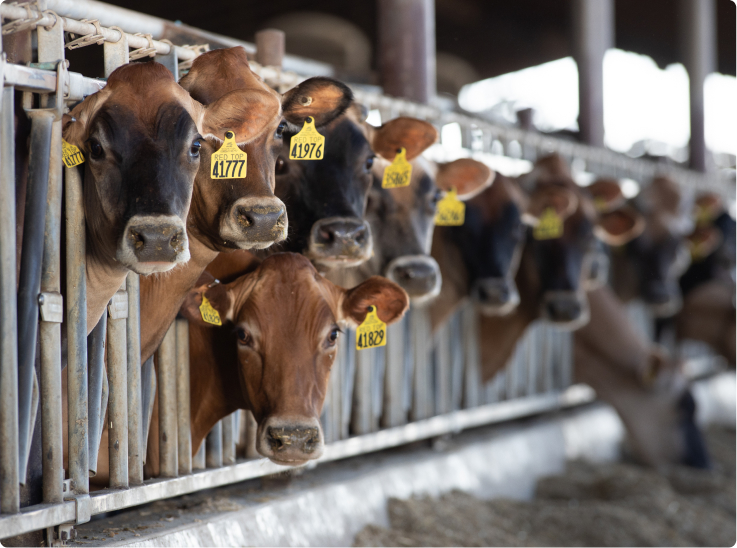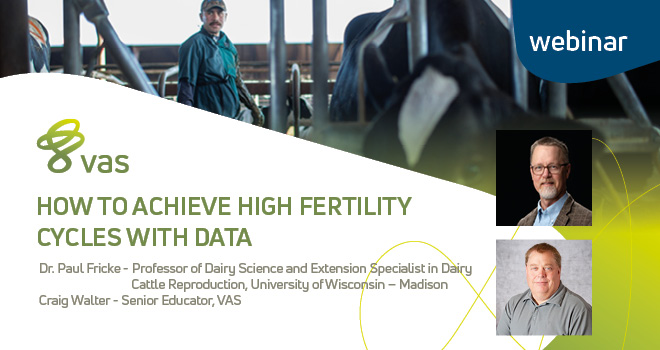Exploring fertility and body condition scores with dairycomp
When looking at dairy reproductive performance, there are countless ways to benchmark success within DairyComp – from days open and calving intervals to conception rates and services per conception – but did you know you can also track individual cow’s body condition scores (BCS) to reveal how your herd’s overall fertility is being affected?
Spoiler alert: Once you dig into the numbers, you may be surprised by the relationship between your cows’ BCS and how quickly you’re able to get them bred back after they calve.

Dr. Paul Fricke, a dairy reproduction expert at UW-Madison, says calving over-conditioned cows is where the problem starts. “We must rethink BCS,” he explains in a recent VAS webinar. A driver of his team’s research, the High Fertility Cycle model suggests that calving cows at a 2.75 to 3.0 BCS, which is slightly less than the industry standard of 3.0 to 3.5, will pay dividends in the long run. The cows will have less body condition loss after calving, leading to fewer health issues, increased fertility and getting them bred sooner.
With DairyComp’s robust analytics, Craig Walter, VAS Senior Educator, recommends recording BCS data one of two ways. View the tutorial below to learn how to set up BCS reporting in your DairyComp dashboard and see how to analyze the data.
BCS is just one factor that can influence your herd’s reproductive performance. Tune into the full How to Achieve High Fertility Cycles With Data webinar to hear more from Dr. Paul Fricke on the effectiveness of timed AI protocols and fertility programs and see how Craig is taking a deep dive into herd repro performance with data in DairyComp.
Have questions about what you learned here or need additional assistance setting it up in DairyComp? Our support team is happy to help! Talk to one of our 30+ support specialist located across the U.S. via phone at 888.225.6753, text at 559.686.9496 or email at [email protected].
